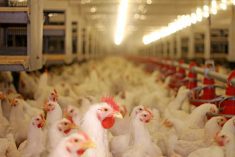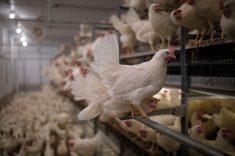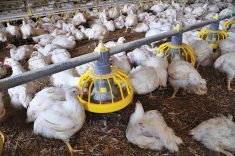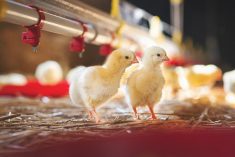A major avian influenza outbreak in the United States is forcing Canada’s layer industry to scramble for imported eggs and pay through the nose for them.
As the AI outbreak continues south of the border, Canadian importers must look further afield for processing eggs, increasing delivery times and transportation costs.
Manitoba sources most of its egg imports from the U.S. Midwest. But now eggs cannot come up through Minnesota because the state is riddled with AI. Transporters are forced to take the long way around through Montana, adding another 1,500 km per trip and increasing shipping costs by about $1,700 a load.
Read Also
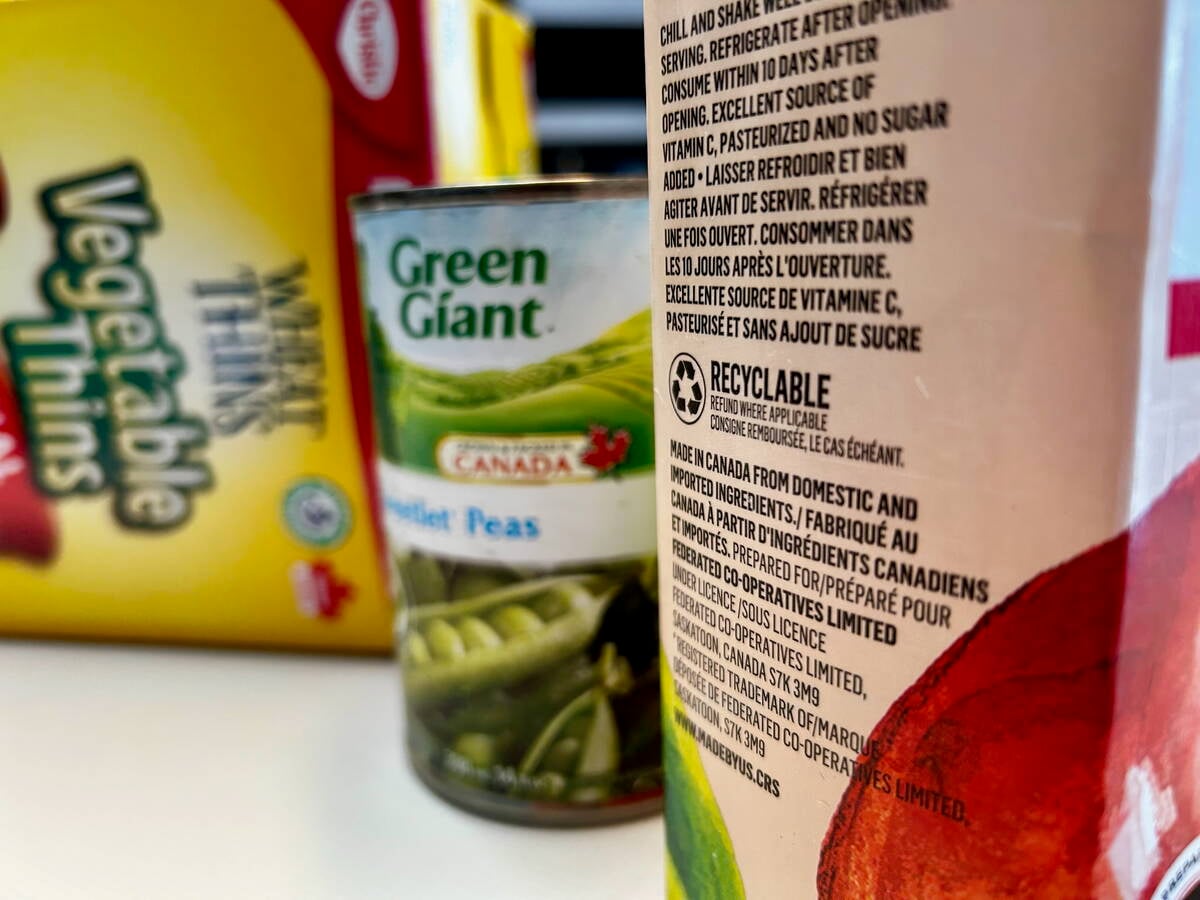
Unclear food labels hinder Canada’s ‘buy local’ surge
“Maple-washing” on Canadian food packaging makes label claims hard to keep straight and hurts both farmers and consumers trying to buy Canadian, economist says.
The growing squeeze on U.S. egg supplies has caused the cost of processing eggs to skyrocket. The price of ‘breaker’ eggs imported for processing has nearly quadrupled from 65 U.S. cents a dozen to $2.35 in just over a month, according to Egg Farmers of Canada.
So far, importers have been able to source enough eggs to meet demand. But rising prices are putting a strain on the industry, said Tim Lambert, EFC’s CEO.
“We’re currently able to source supply. It’s the price. As supplies tighten, the price goes up. There’s more competition for available supply,” Lambert said.
Lambert said EFC is working closely with other industry players to locate adequate egg supplies outside the country while ramping up domestic production by placing more layer hens.
Other strategies include extending flock cycles and expanding the national Eggs For Processing program, which enables provincial marketing boards to issue special permits for processed eggs to meet market requirements.
“Our solution is, pay the price for as short a time as possible and gear up our own production as fast as possible,” Lambert said.
A strong growth in Canada’s table egg consumption has led to a shortage of processing eggs and increased the need to source supplies from outside the country. Lambert said the average Canadian ate 18 dozen eggs last year, up from 15.6 dozen eight years ago. Egg imports are up 30 per cent over last year, with most going to the breaker market.
Canada also imports roughly 20 per cent of its broiler hatching eggs, as well as many of its breeder pullets. So far, the AI outbreak in the U.S. does not appear to be affecting those supplies.
“Our producers have had no interruption of service or supply whatsoever,” said Wayne Hiltz, executive director for Manitoba Chicken Producers. “That doesn’t mean there’s no logistical headaches going on behind the scenes but they’ve seen no interruption.”
Hiltz said hatcheries have been working together to combine loads and reroute shipments to reduce risk. Sometimes delivery schedules need to be adjusted by several weeks but no orders have been cancelled so far.
Chicken industry officials say most orders for breeder pullets are placed a year in advance, so they’re safe. However, some industry analysts suggest they may not be as secure as producers think. Post Holdings Inc. last week said avian flu constitutes a “force majeure event” for its Michael Foods egg business. Declaring force majeure means a company can get out of contract obligations due to an unpredictable event beyond its control.
The U.S. is battling its biggest outbreak of pathogenic avian influenza on record, with nearly 200 detections reported in 16 states. Over 43 million birds have been affected.
Lambert said biosecurity for poultry barns in the U.S. is generally high. But because American poultry operations operate on a massive corporate scale, the risk for spreading disease can be significant.
The average flock size in the U.S. is 1.5 million birds. Lambert said the traffic from feed trucks and catching crews can involve hundreds of people going in and out of barns, raising the danger of transmitting pathogens.
Here in Canada, layer farms are mainly family operations averaging 22,000 birds. That makes it easier to limit access to barns and impose strict biosecurity measures, said Lambert.
“Having the smaller-scale industry that we have very much works in our favour.”
Even so, poultry farmers have enhanced their biosecurity because of the possible spread of AI from the south. Hiltz said the Manitoba chicken board has raised its four-level biosecurity protocol to Level 3 (enhanced). Producers are advised not to allow anyone except essential personnel on their farms, use specific footwear and clothing when entering buildings and spray shoes and floor pads with Lysol when getting in and out of vehicles.
“To date, our biosecurity has allowed us to stay avian influenza free in Manitoba,” said Hiltz.
Cory Rybuck, Manitoba Egg Farmers general manager, said his producers are not under enhanced biosecurity yet. But MEF is providing them with updates on the U.S. situation and telling them to “make sure that their driveways and barn doors are their best lines of defence.
“The concern is still high and certainly for the next month we’ll see what’s going to happen in the States. There’s no reason to take our foot off the gas at this point,” Rybuck said.
There have been several incidents of AI in Ontario and British Columbia reported in 2015 and late 2014. The last case in Manitoba involved a turkey breeder north of Winnipeg in 2010.
With files from Reuters




